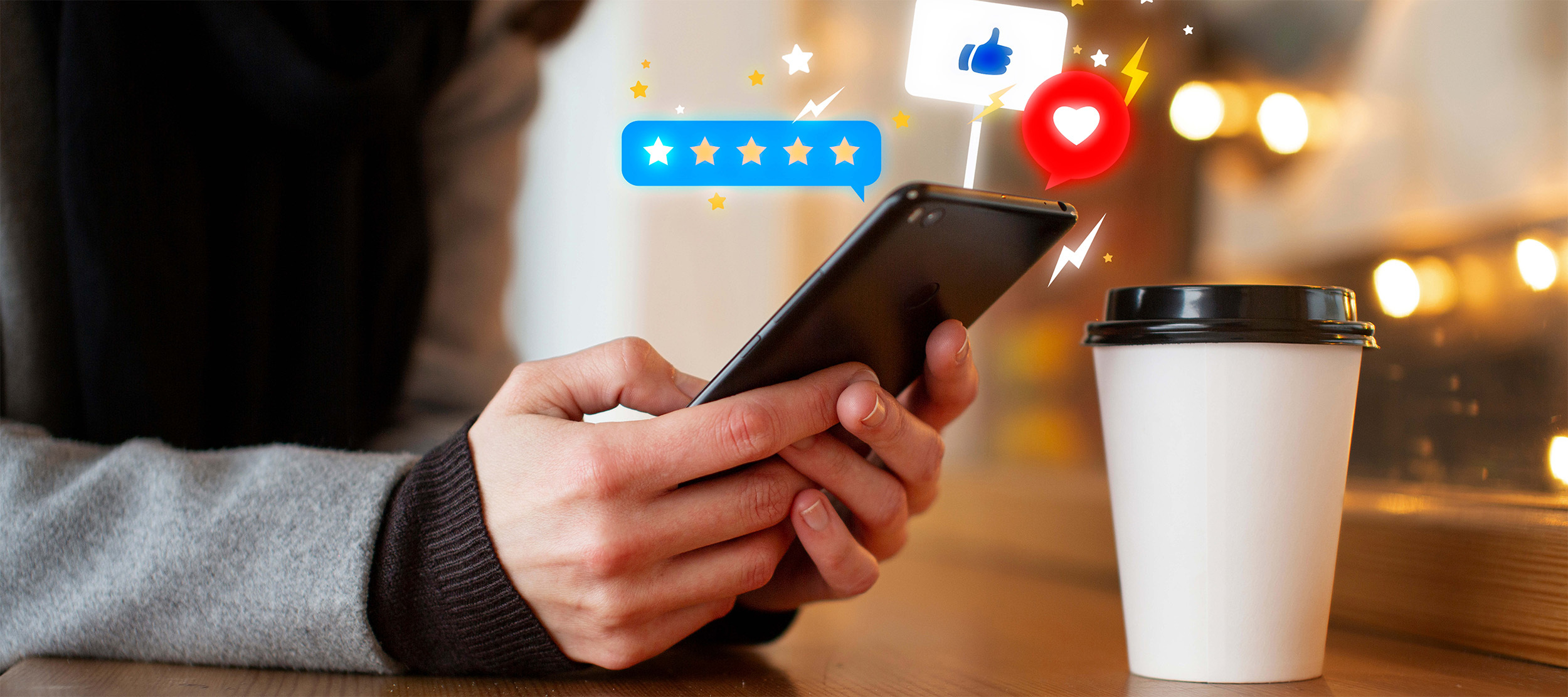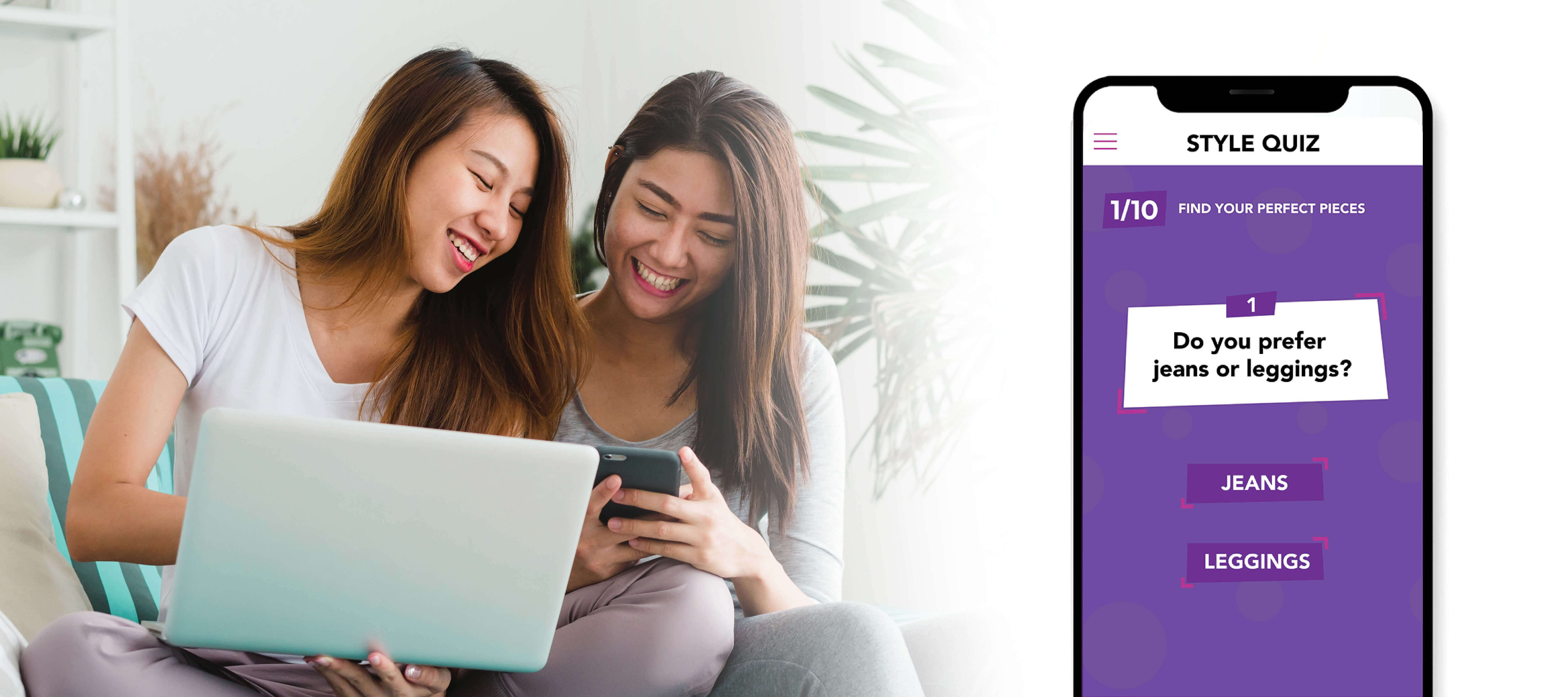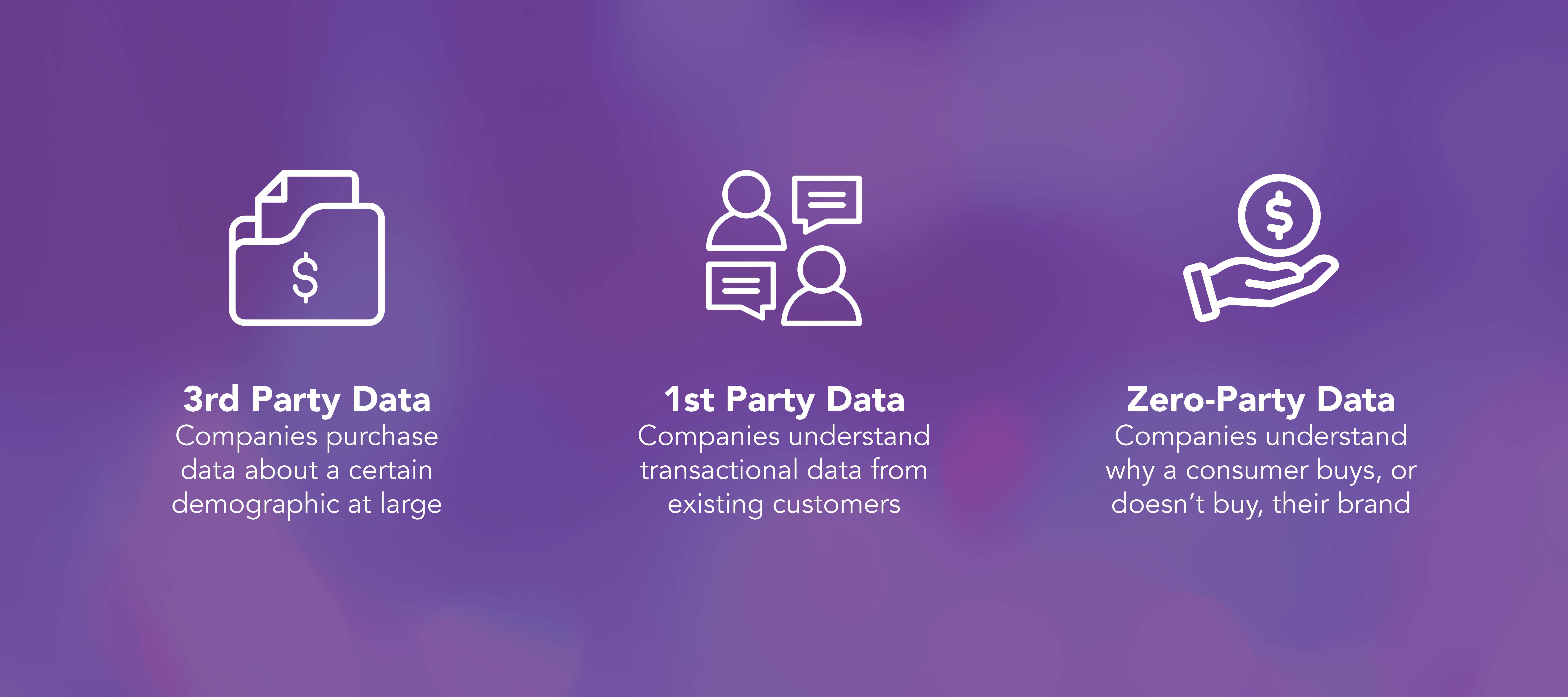3, 2, 1, Zero: How Zero-Data Marketing Is Changing Data Collection & Why It Helps With Messaging


When I was young, I remember news anchors or other TV personalities talking about survey results (More Americans prefer vanilla ice cream over other flavors! Most households watch 2 hours of TV per day!) and I would think, Why wasn’t I asked those questions? Who are they asking? And what flavor of ice cream would I rate as number one if I really had to choose? (I’m leaning towards cookie dough in case you were wondering.)
I wanted my voice to count. But, back then, you had to wait to be asked.
Now, consumers freely give feedback, whether they know it or not.
Marketers want to hear your voice, too. But sending out consumer surveys is time-consuming and costly. Gathering focus groups is also not very cost-effective, and are people really providing honest feedback when they are in a group setting? Or is the loudest voice in the room the one that everyone agrees with?
How marketers ask for, collect, and analyze data has evolved over the years.
Let’s take a deeper dive into what marketers should be using today to better understand what products, services, or experiences the consumer actually wants. And more importantly, why they want it.
What is Third-Party Data?
Third-party data is the furthest from being able to provide us answers or context. It’s also on its way out — heavy regulations are severely limiting this form of data collection. This type of data is usually purchased from other sites or sources and it provides a more general picture of demographics or purchasing signals.
Let’s say you purchase a home. In two weeks, you receive a direct mail piece offering some sort of product or service related to owning a home. How did that company know you just purchased a house? They most likely purchased your data from a third-party source.
What is First-Party Data?
In today’s digital environment, companies are able to connect instantly with their audiences. First-party data uses this connection when you give blanket consent via cookies that allow the company to analyze your clicks, searches, or purchase history. It gives us some insight into consumer behavior, but doesn’t give us the entire picture.
For instance, it might tell a company what you bought, but it doesn’t tell them why you bought it.
What is Zero-Party Data?
Our digital world is constantly evolving and getting more intelligent. Leveraging data points and audience connections go a long way in understanding our audiences. Zero-party data is information a consumer shares with a brand. On purpose. It’s not a stealthy internet cookie-ninja mining data in the background. It’s you, on your phone or laptop, providing information with context about how you feel about the brand, the experience you want to have with the brand, or how you want to be recognized by the brand.
Brands are capturing zero-party data with:
- Quizzes
- Surveys
- Promotions
- Single-question pop-ups
- Preference centers

Zero-party and first-party data can work together to strengthen the data and helps inform our messaging for a website, email marketing, and social media. After all, how do you design a website if you don’t understand who is coming to your site, and why?
How Does Zero-Party Data Help Us Connect?
You are a B2C or B2B company.
You have an audience but you want to understand that audience better.
You have a website, app, or e-commerce site where that audience is already spending time.
Zero-party data is easier to deploy because you are basically raising your hand at this audience you already have the attention of, telling them you want to:
- Understand their likes
- Understand what products they’re most interested in
- Understand how they feel about your brand
Having this data then allows you to offer personalized experiences that will resonate with your customer more authentically, which markets know is what Gen Z and Gen Alpha are all about. Start small — collect single data points with product finder quizzes, post-purchase surveys, preference centers, or contextual questions (How did you find out about us?).
Once you start collecting these single data points you can build on those. If a consumer returns for a second purchase, ask a different question. Dig deeper.
As third-party data dies a painful death, and first-party data only provides a partial picture, zero-party data is the next wave. It drives us toward a better understanding of our consumers so we can deliver more personalized, relevant, authentic brand experiences.

-
Contact Us
-
 Julie JalowiecDirector of Content and EngagementA copywriter at heart, Julie loves to write...but that’s kind of a given. More specifically, she loves writing stories–for clients and for the literary agent who will one day sign her. When she’s not spending time behind her laptop, Julie loves hanging out with her husband and three boys and walking her two rowdy Huskies, Loki and Scarlet.
Julie JalowiecDirector of Content and EngagementA copywriter at heart, Julie loves to write...but that’s kind of a given. More specifically, she loves writing stories–for clients and for the literary agent who will one day sign her. When she’s not spending time behind her laptop, Julie loves hanging out with her husband and three boys and walking her two rowdy Huskies, Loki and Scarlet.